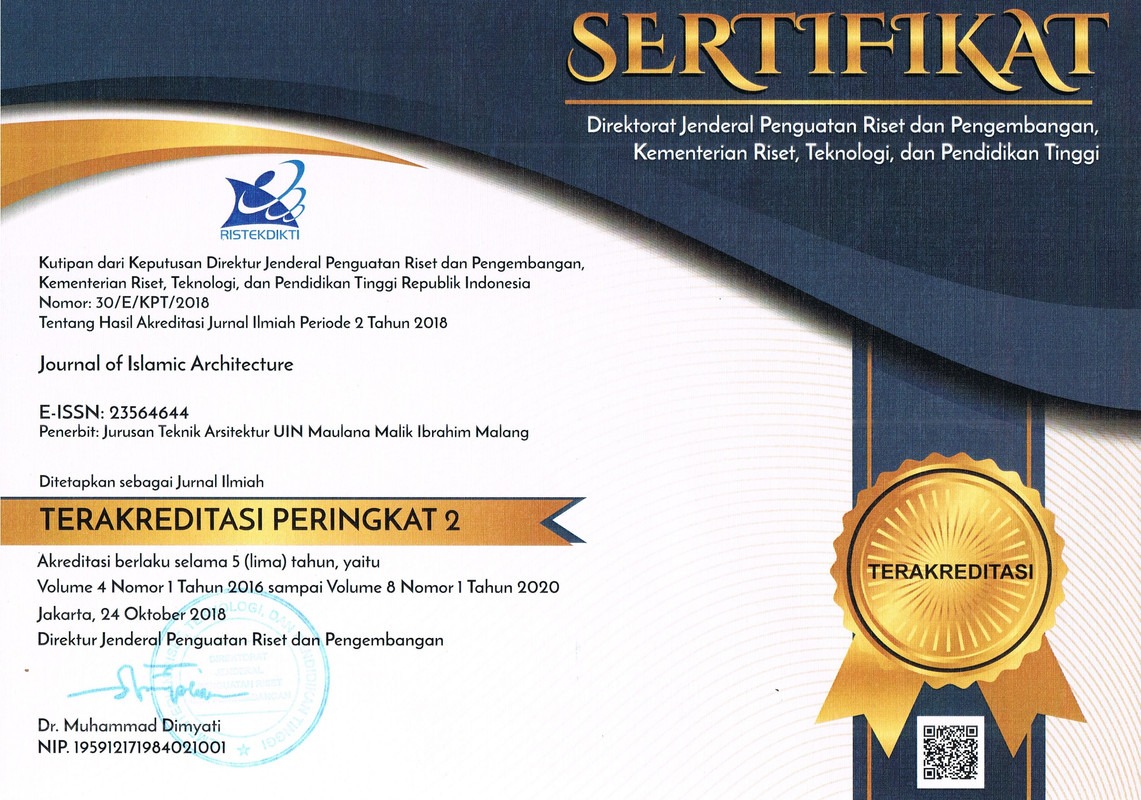PATRONS OF OTTOMAN MOSQUES IN GREECE RECONSIDERED IN LIGHT OF THE IERAPETRA MOSQUE OF CRETE
Abstract
T
The subject of this paper is based on a reconsideration of patrons of Ottoman mosques in Greece in light of the analyzed study of the Ierapetra Mosque of the island of Crete. This paper draws a layout of the Ierapetra city under the Ottomans based on the relevant sources with particular reference to the salnames and old photographs. It examines in details about the architecture, the inscriptions, and the historical context of Ierapetra mosque. This paper also corrects the reading of some inscriptions and proposes reading for some Arabic inscriptions for the first time. Based on a survey by the author conducted between 2006 and 2016, there are around eighty Ottoman historical mosques in Greece that still exist. It concludes that the Ierapetra mosque is a notable example with its architecture, inscriptions, and fountain. Moreover, it is one of the rare cases in Greece that were built by the contribution of the Muslim community of the city.
Keywords
Full Text:
PDFReferences
N. Steinhardt, “China's Earliest Mosques,” Journal of the Society of Architectural Historians, Vol. 67, pp. 330-361, Sep. 2008.
E. Baldissera, al-Kitābāt fì l-masāğid al-`umāniyya al-qadìma [=Inscriptions of the Old Mosques in Oman], Ministry of National Heritage and Culture, Muscat, 1994.
A. Ameen, Islamic Architecture in Greece: Mosques. Foreword: Dr. Mostafa El Feki, Center for Islamic Civilization studies, Bibliotheca Alexandrina, Alexandria, 2017.
H. W. Lowry, The Evrenos Family & the City of Selânik (Thessaloniki): Who Built the Hamza Bey Câmi’i & Why? , Istanbul: Bahçeṣehir University Press, 2010.
Evliyâ Çelebi, Evliyâ Çelebi Seyahatnâmesi. Seyit Ali Kahraman, Yücel Dağlı and Robert Dankoff. (Eds.), vol. 8. İstanbul: Yapı Kredi Yayınları, 2003.
M. Kiel, “Observations on the History of Northern Greece during the Turkish Rule: Historical and Architectural Description of the Turkish Monuments of Komotini and Serres, their Place in the Development of Ottoman Turkish Architecture and their Present Condition”, BSt 12 (1971), 426–456.
H. W. Lowry, The Shaping of the Ottoman Balkans 1350–1550: The Conquest, Settlement and Infrastructural Development of Northern Greece. Istanbul: Bahçeşehir University Publications, 2008.
M. Hartmuth, “The Princess and the Mosque: Ottoman Royal Women’s Architectural Patronage in the Province and the Case of the so-called Zincirli Câmi‘ at Serres”. In Juliette Dumas and Sabine Frommel (Eds.), Bâtir au féminin ? Traditions et stratégies en Europe et dans l’Empire ottoman. Paris: Picard, 2013, 79–88.
Δ. Ν. Καρύδη and M. Kiel, Μυτιλήνης αστυγραφία και Λέσβου χωρογραφία, 15ος–19ος αι., με βάση αδημοσίευτες οθωμανικές και γαλλικές αρχειακές πηγές. Αθήνα, 2000.
H. W. Lowry, Ottoman Architecture in Greece: A Review Article with Addendum and Corrigendum. Istanbul: Bahçeflehir University Press, 2009.
M. Baer, "Globalization, Cosmopolitanism, and the Dönme in Ottoman Salonica and Turkish Istanbul." Journal of World History 18/2 (June 2007), 141 – 170.
Θ. Σ. Μαντοπούλου-Παναγιωτοπούλου, Θρησκευτική αρχιτεκτονική στην Θεσσαλονίκη κατά την τελευταία φάση της Τουρκοκρατίας (1839–1912): Εκκλησίες–Συναγωγές–Τζαμιά, Διδακτορική Διατριβή που υποβλήθηκε στο Τμήμα Αρχιτεκτόνων της Πολυτεχνικής Σχολής του ΑΠΘ, Θεσσαλονίκη, 1989.
Ν. Παπαδάκης, Ιεράπετρα Η Νύμφη του Λιβυκού οδηγός για την ιστορία, αρχαιολογία και τον πολιτισμό της, έκδοση Δήμου Ιεράπετρας, Ιεράπετρα, 2000.
Salnâme-i Vilayet-i Girid 1310 (26-7-1892/14-7-1893)
Salnâme-i Vilayet-i Girid 1292 (7-2-1875/27-1-1876)
Salnâme-i Vilayet-i Girid 1309 (7-8-1891/25-7-1892)
L. S. Stavrianos, The Balkans since 1453, New York: Rinehart, 1958.
"Mosque of Ankebut Ahmet Paşa (?) in Ierapetra." Retrieved from: http://digitalcrete.ims.forth.gr/tourkology_monuments_display.php?l=1&id=280 [Access date 6 Feb. 2016]
M. Mari, “Mosque of Ierapetra”, In Ottoman Architecture in Greece. In Brouskari, E. (Ed.) Athens, 2008.
Ε. Ζέη, Χώρος και φωτογραφία : το Ηράκλειο από την Οθωμανική Αυτοκρατορία στην Κρητική Πολιτεία: συλλογή Μιχάλη Σάλλα, Αθήνα : Πολιτιστικό Ιδρυμα Ομίλου Πειραιώς, 2005.
Ch. D. Bardes, “Caduceus”, Agni, No. 63 (2006), 235-238.
S. Şahin and Ş. Sönmezer, “Osmanli Mimarisinde Figürlü Tasvir Sanati Hakkinda Daha Önce Bilinmeyen Bir Örnek: I. Mahmut Su Kemeri”, Sanat Tarihi Yıllığı Sayı 26, 2014, İstanbul Üniversitesi Edebiyat, İstanbul, 2017, 105-140.
M. A. Othman and A. M. Al-Emam, “Mosque Architecture in Response to Sharia Rules: An Applied Study of Historic Mosques”, Symposium on Mosque Architecture, Vol. 8: Mosque architecture according to the Sharia rules, College of architecture and planning, King Saud University, Riyadh 1999, 133-160.
Mosque of Ierapetra. Retrieved from: http://digitalcrete.ims.forth.gr/tourkology_monuments_display.php?id=172&l=1 [Access date 6 Feb. 2016]
H. W. Lowry, The Nature of the Early Ottoman State, Albany: State University of New York Press, 2003.
E.H. Ayverdi, Avrupa'da Osmanli Mimari Eserleri IV: Bulgaristan, Yunanistan, Arnavutluk. Istanbul: Istanbul Fetih Cemiyeti, 1982.
Δ. Ε. Κουτρούλας, Μουσουλμανικά τεμένη και τεκκέδες στη Θράκη. Ιστορική και βιβλιογραφική προσέγγιση, Μεταπτυχιακή Εργασία - Αριστοτέλειο Πανεπιστήμιο Θεσσαλονίκης, Θεσσαλονική, 2009.
DOI: https://doi.org/10.18860/jia.v5i3.5365






